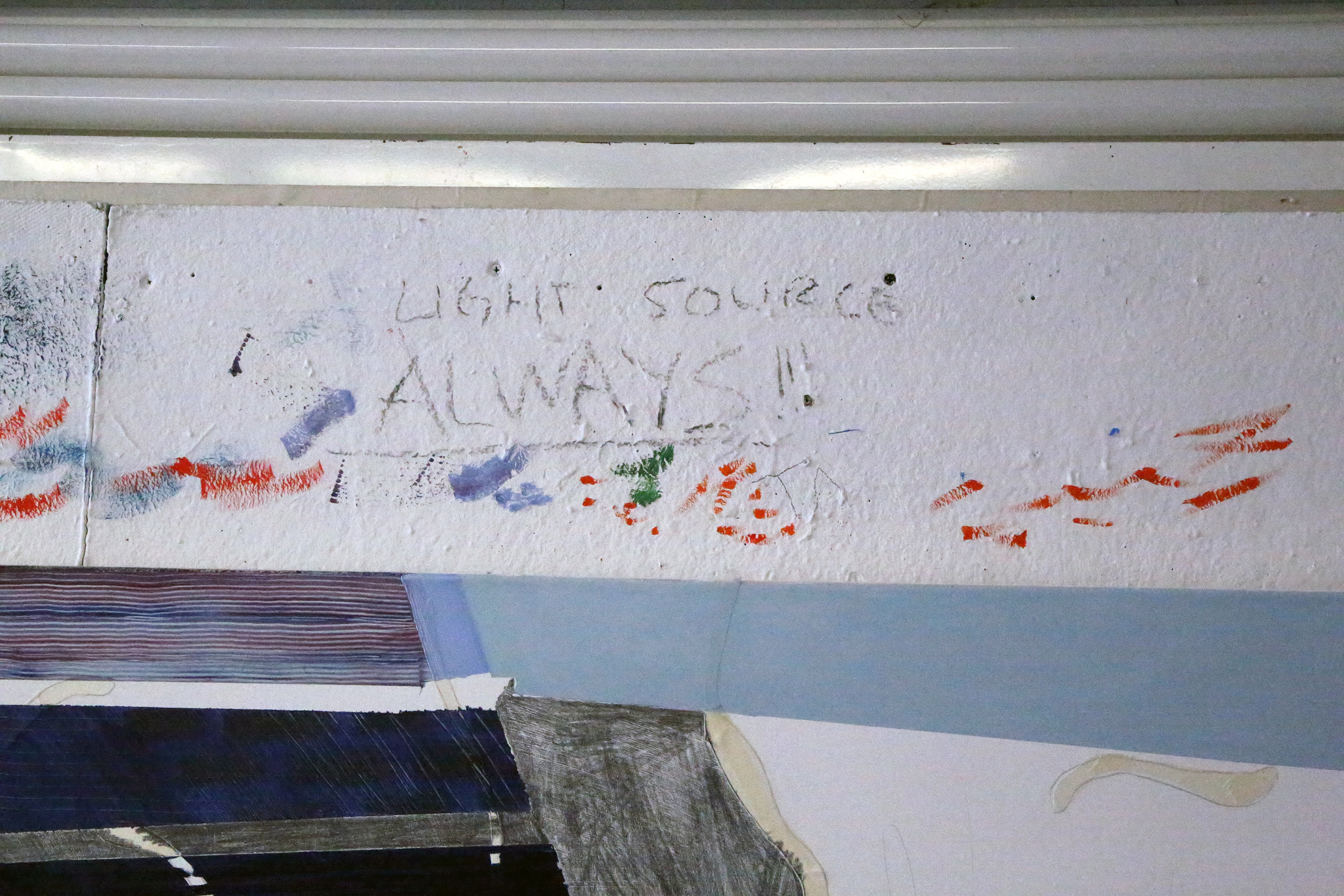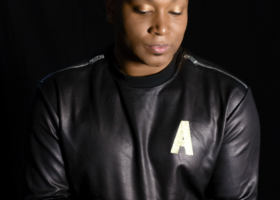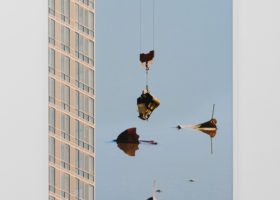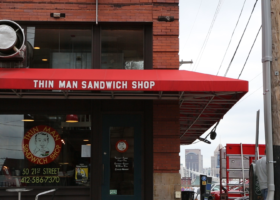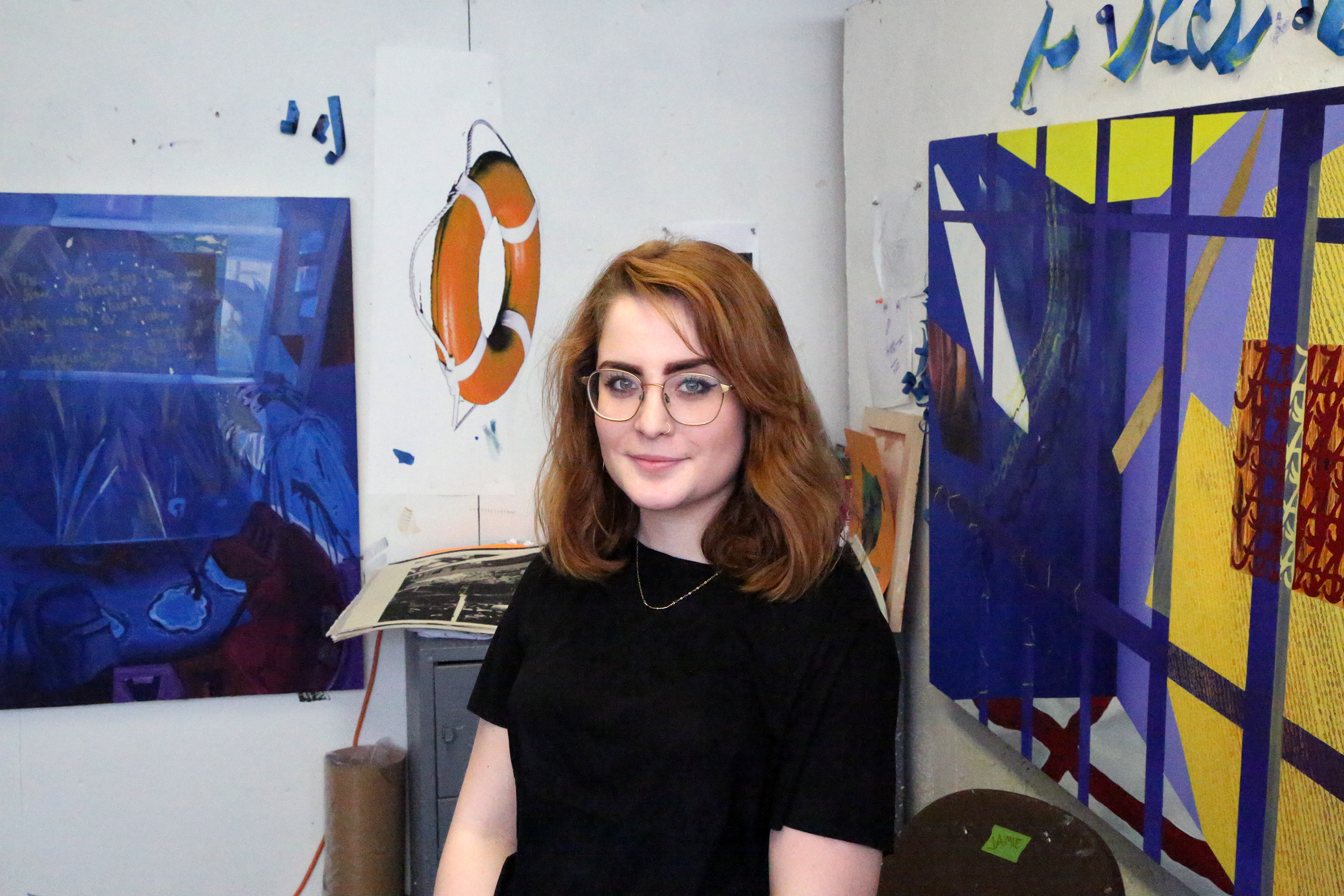
Much of today’s discussion on local art centers on a few topics: sustaining a living as a Pittsburgh-based artist, creating equity in opportunity, energizing a local art market, or fostering critique. Studio Visit is a series intending to contribute to this discussion by spending time in-studio with artists, their work, and their thoughts on a creative life.
![]()
David Bernabo: When I first saw your work, I’d was attracted to this idea of impossible rooms–places and environments that cannot physically exist, given the bounds of architecture–and how you used non-paint materials to help realize those images.
Jamie Earnest: I actually came to Carnegie Mellon wanting to be a sculptor and an installation artist because I’m really interested in space, but I took a painting class with Clayton Merrill and I realized that I would have so many more possibilities on a 2D surface because I can create the impossible. I became enamored with that idea and I haven’t stopped.
DB: And you didn’t have to worry about sculptures falling over?
JE: Right, I’d actually have to deal with limitations with sculpture, but with painting, I can make anything I want.
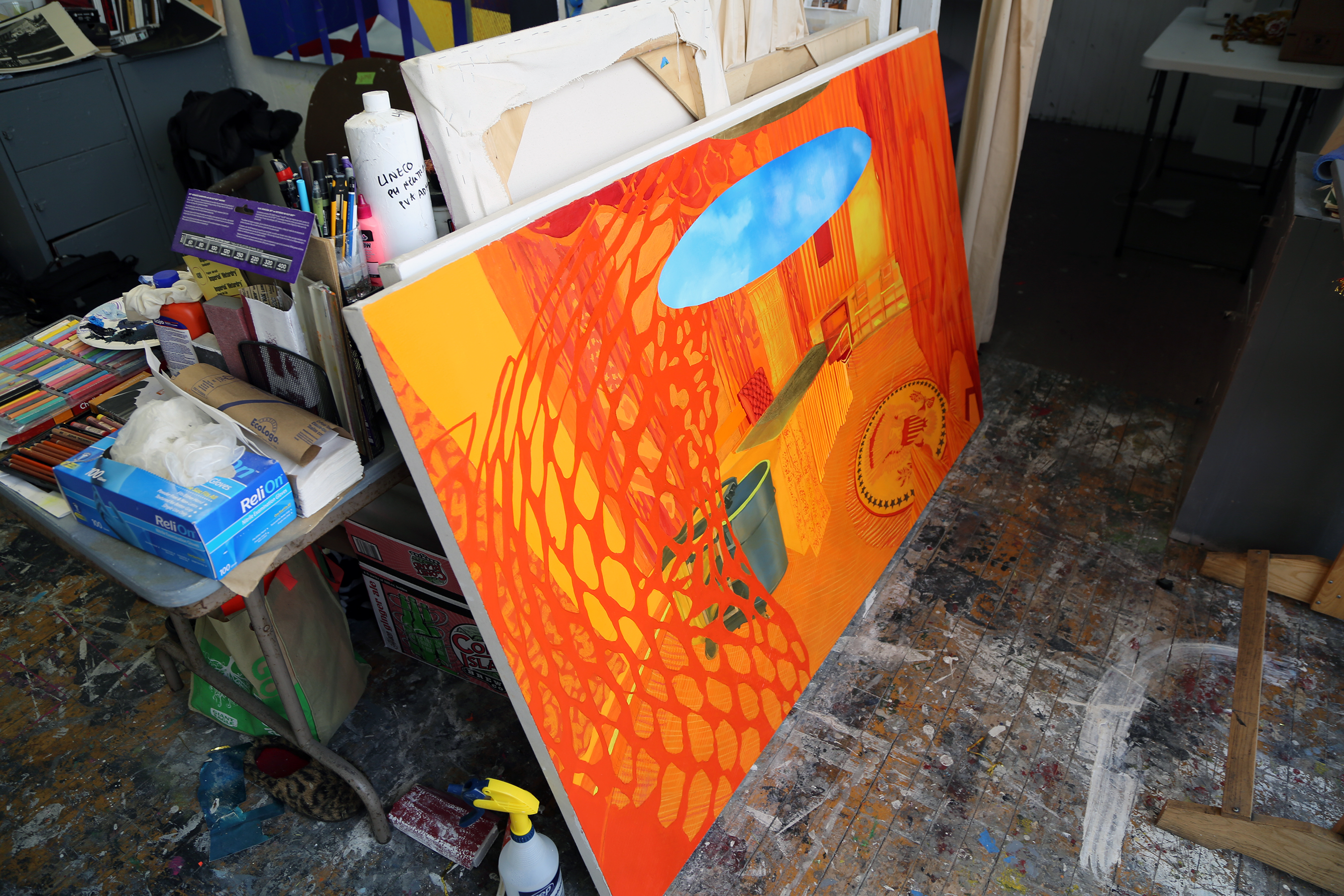
DB: Looking at your more recent paintings, there is a higher ratio of paint to non-paint materials. Are you still interested in mixed media elements and ideas of space or environment?
JE: This election situation has changed my work. [Before this], I never made any political work. All of my work was coming from personal stories about space, but now I feel like the work is coming from more of a political arena. It’s new territory for me.
DB: How do you stay away from being overly heavy handed?
JE: I’m still trying to walk that line. With my orange painting of the oval office, I had a critique on it, and everyone was taking it as extremely heavy handed, like “wow, it’s so orange, cheetos, fake tan.” But that was not my intention. I was thinking of the institutional signs with orange–warning, poison, construction. So, I’m still trying to figure out how not to be heavy handed, because I’m not a heavy handed person. To me, this painting is full of puns.
DB: Is that a garbage can?
JE: Yeah, punny, right? I found myself using less collage materials [on these newer paintings] and getting more into what the paint can do. I think that’s just more me getting better at painting.
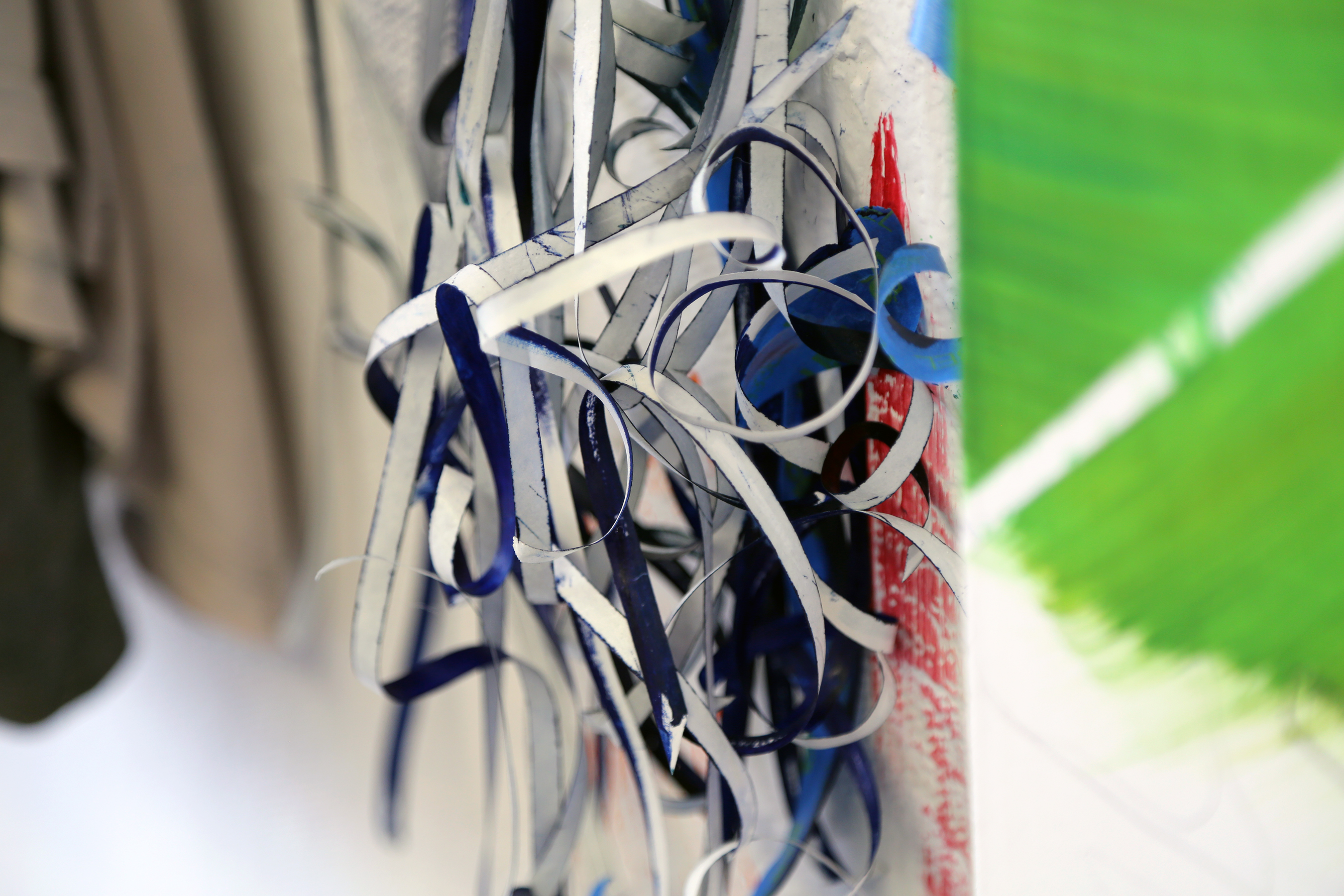
DB: What’s the decision making process like when adding collage elements?
JE: First, these materials are sitting directly on the surface. So, if I’m painting something that has this spatial air to it, that collage object will bring you right back to the forefront and remind you that this is a painting. But also some of these materials have sheens and textures that I couldn’t necessarily create with oil paint, especially some of the shiny materials. But I’ve been using these materials less this year. I’ve been more enamored with the actual painting. I found myself adding [these materials] because I’m really impatient. While paint is drying, I’ll stick different things to my canvas, but I think [the collage objects] create a nice juxtaposition to the paint.
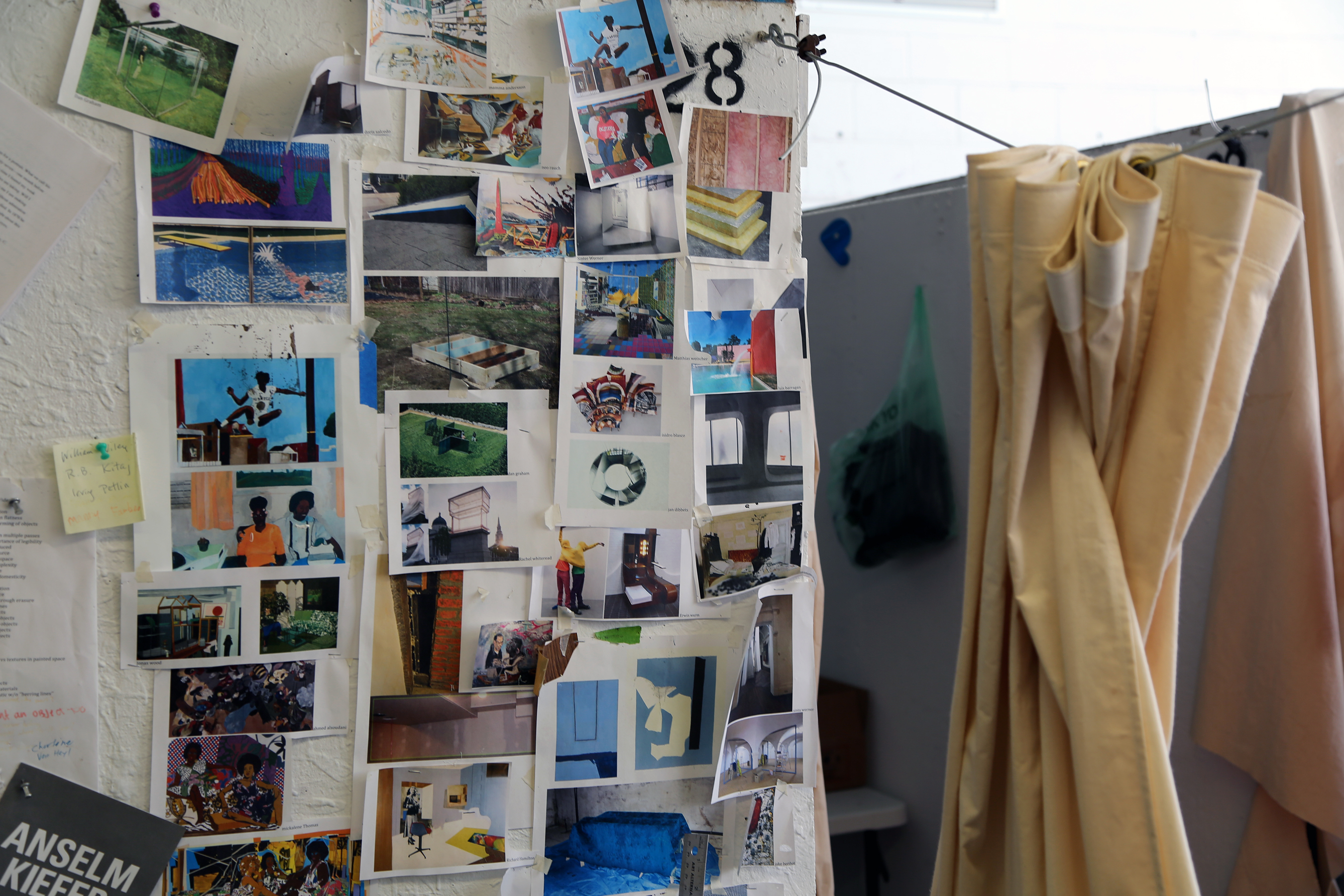
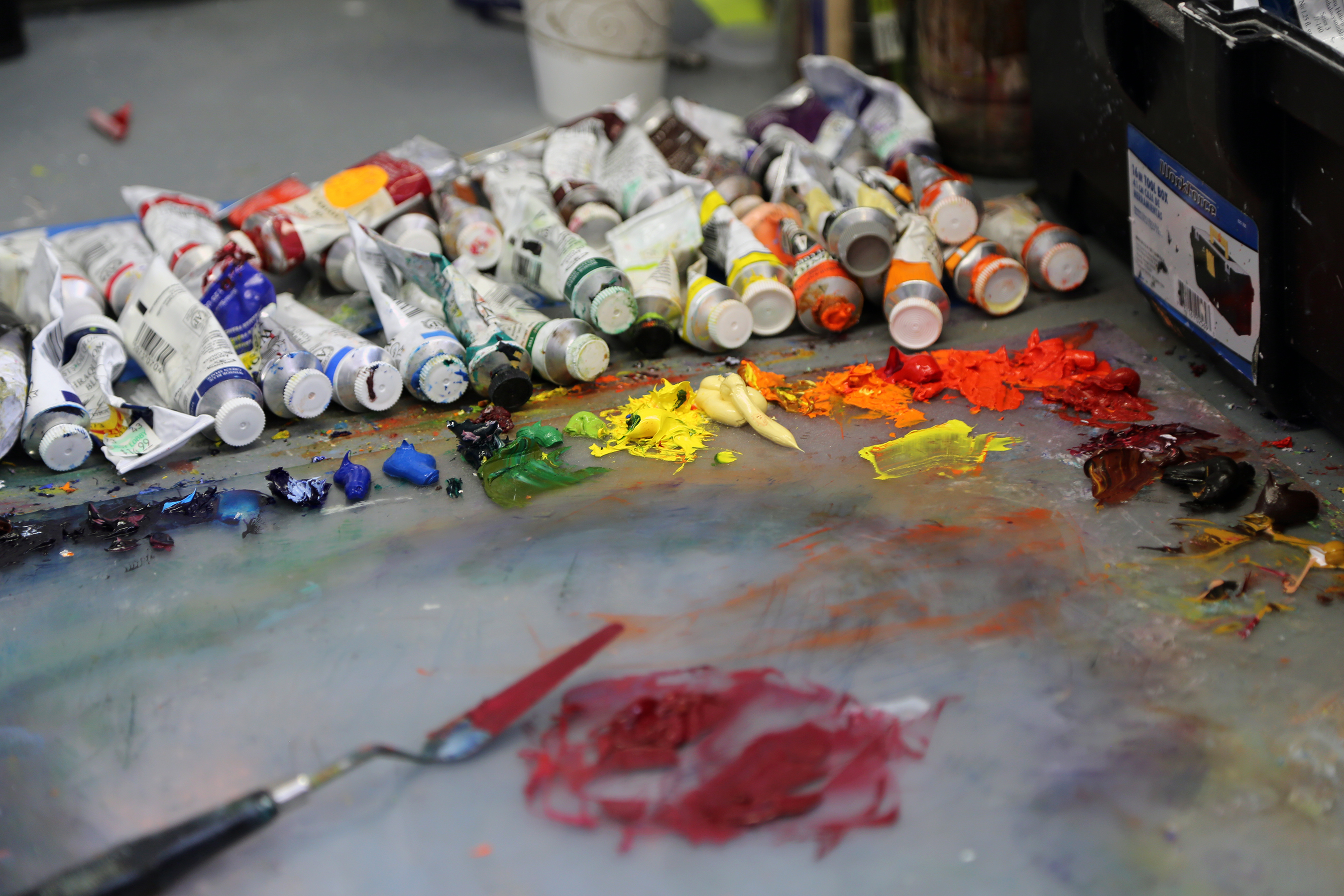
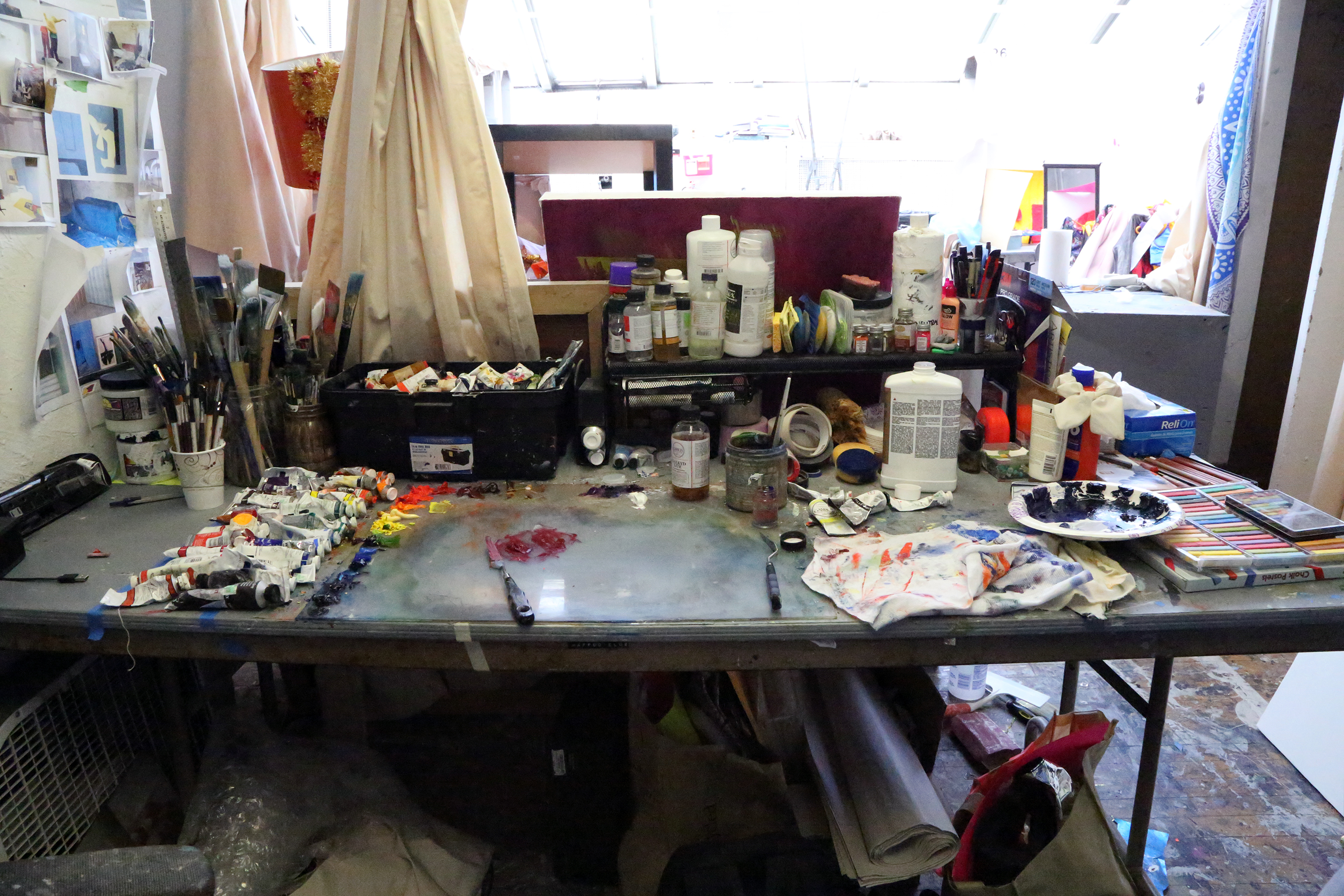
JE: I have a policy where I make one painting a day. So, after I stretch a large canvas, I have all these strips of canvas that I rip into squares and gesso them. Then I make a painting each day using acrylic [paints]. Those are more of an exercise. If there is one that I think people will like, I’ll stretch it and sell it.
DB: Do you work on multiple pieces at the same time?
JE: Yeah, it’s helpful [to work that way]. Sometimes if I can’t solve a problem with one of the paintings, if I work on another then I have time to think about the problem. It’s kind of like a game of tennis.
DB: How do you register the problems? Is it intuitive or are you measuring your goals for the painting against the current state of the work?
JE: I’m really bad at starting a painting with 30% of an idea, because I really want to start painting. So, once I get the 30% done, I have to go back and figure out what I want to do with the painting. It depends on the problem. I find it helpful to talk to other people, too. I’m going through a personal problem right now where I feel like my paintings are very trendy.
DB: Really? [laughs]
JE: The color palette is very much like stuff you see on Instagram. I don’t know if I’m subconsciously taking that [influence] and applying it, but I don’t want to be in that realm. I’m not trying to accomplish anything with any of these paintings, except to release my own need to paint. I always tell people that I became an artist, because I didn’t want to work for anyone else.
DB: How’s that working out for you?
JE: [laughs] I mean, I have three day jobs so it’s not going that well, but all my jobs are awesome. I love them. But that’s the goal eventually.
DB: Have you found an art market here in Pittsburgh?
JE: I feel like I’m super lucky and happened to meet the right person who then introduced me to [buyers]. I’m sticking around Pittsburgh after this year, because I feel really supported here and I can afford to live here.
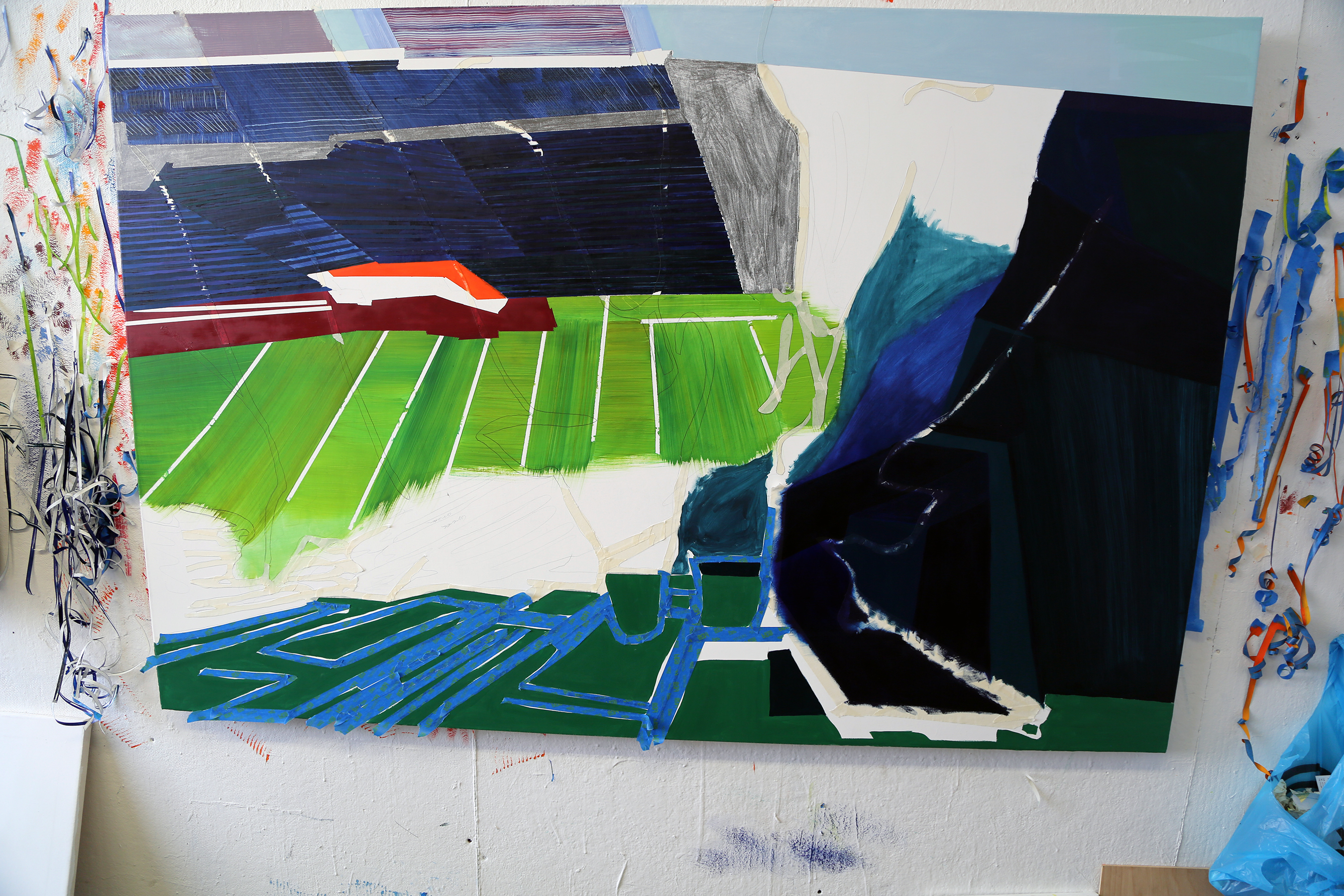
DB: So what’s the 30% in this painting?
JE: Football field and pigs. I’m from Alabama. As of this past week, officials from all three of our branches of government have either resigned or have been removed for ethical reasons. So, I’ve found myself making a lot of work about Alabama, recently.
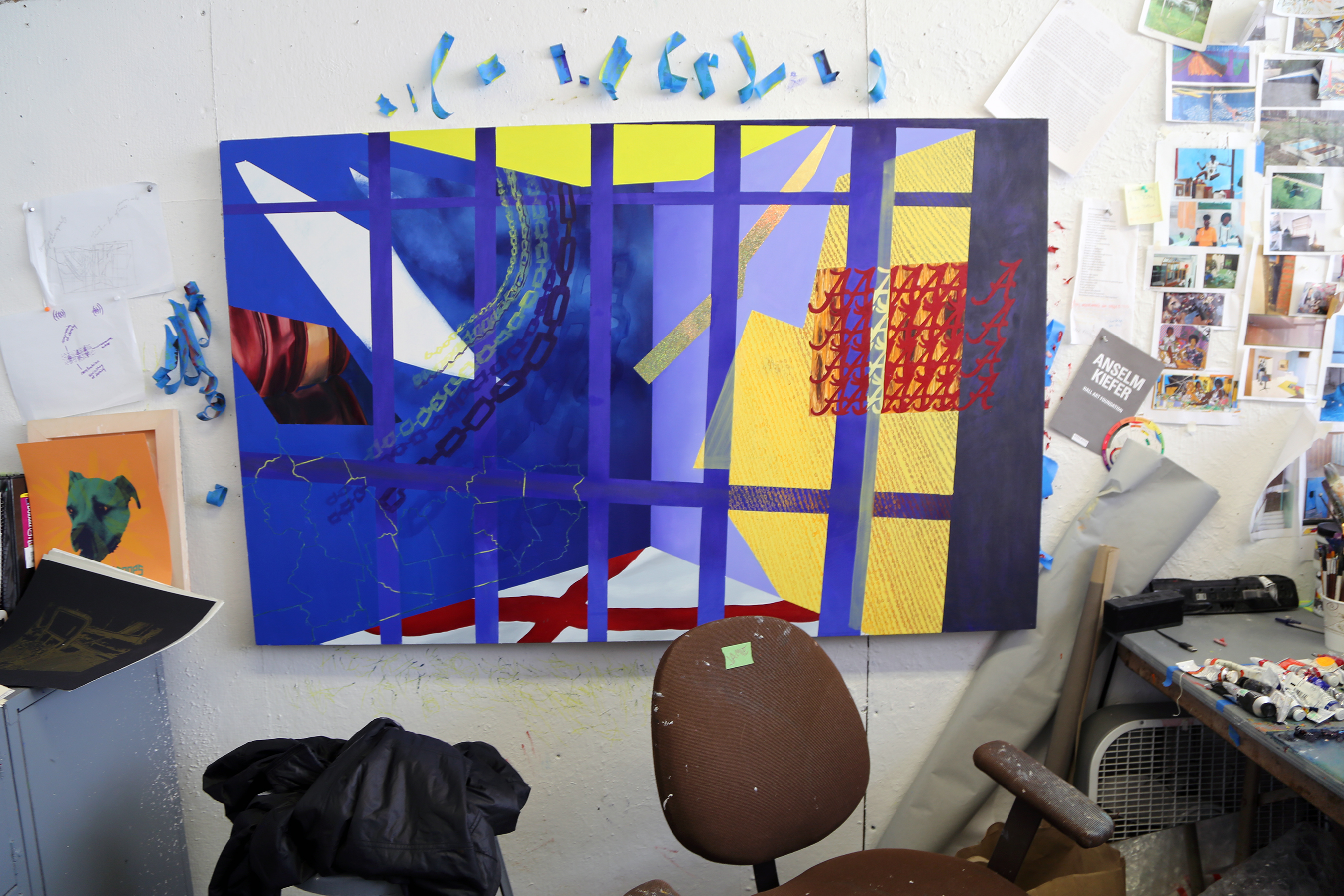
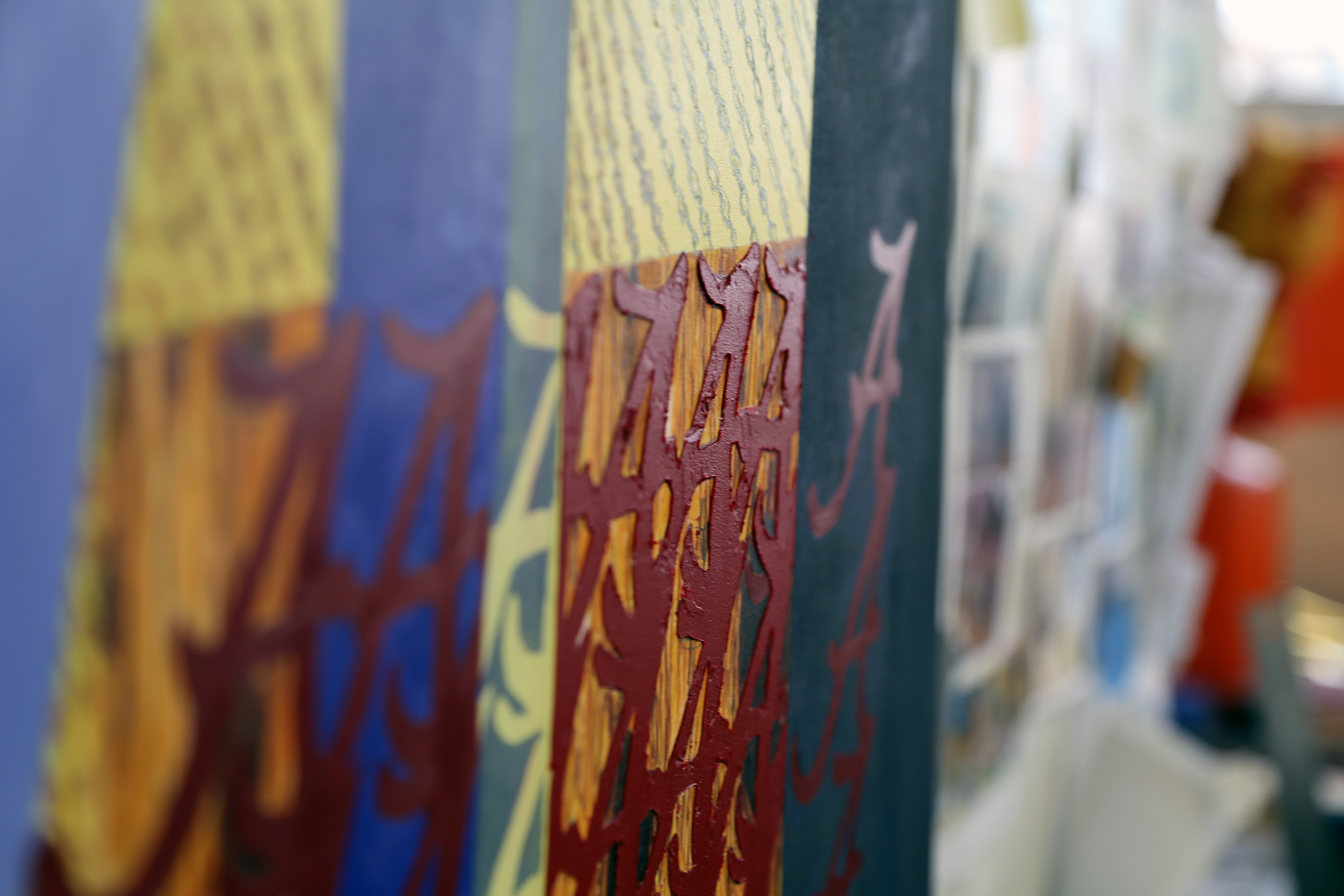
JE: And then this is my idea of Jeff Sessions looking upon his sins committed against Alabama from his future office. That was the 30% of the idea when I made the painting. I’ve never worked with so many specific symbols before, so I’m still learning to put them together where it’s not clunky.
DB: I love how thick that paint is on the “A” logo?
JE: That’s the Alabama Crimson Tide logo. I mixed the paint with wax, stenciled [the pattern], taped around it, and then it was like putting icing on a cake.
